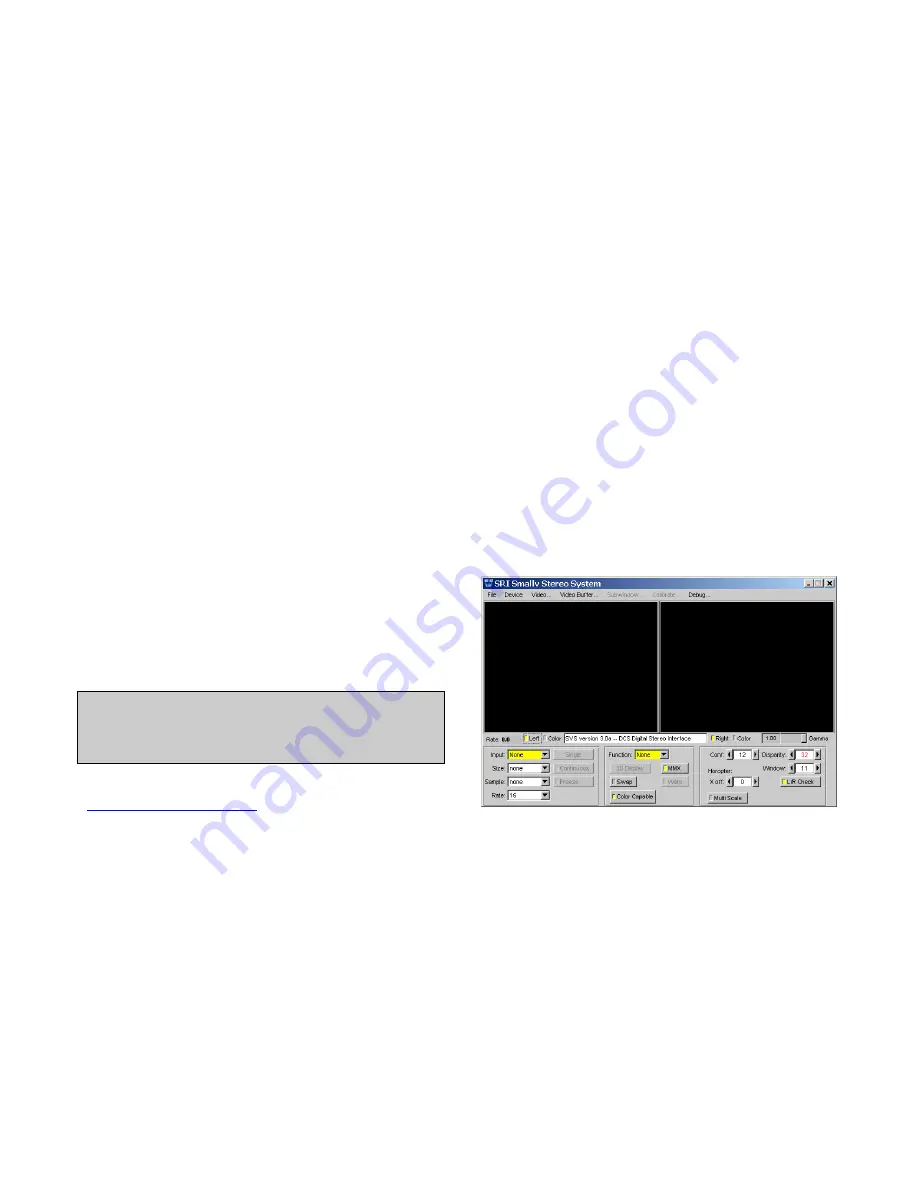
STH-DCSG
U
SER
’
S
M
ANUAL
©
2005
V
IDERE
D
ESIGN
6
2 Quick
Start
The STH-DCSG/-C normally comes assembled with the lenses mounted. If
you need to change the lenses, or if you are supplying your own, please see
Section 6.1.
To set up and test the STH-DCSG/-C, you will need the following:
1.
Pair of C-mount lenses, for 1/2” or larger imager (normally
included and mounted with the STH-DCSG/-C kit).
2.
Host computer with an IEEE 1394 PCI (desktop) or PCMCIA
(laptop) card, OHCI compliant; or a built-in IEEE 1394 port.
3.
IEEE 1394 6-pin to 6-pin cable.
4.
Small Vision System installed on the host computer.
Install the IEEE 1394 host card, if necessary, according to the directions in
Section 4.1. Install the Small Vision System software (see Section 4.2).
If the lenses are not mounted on the device, follow the directions in Section
6.1 for installing them.
Plug one end of the IEEE 1394 6-pin video cable into the 1394 jack on the
back of the STH-DCSG/-C, and the other into an IEEE 1394 port on the
host PC.
Note: The STH-DCSG draws power from the IEEE 1394 bus. PCI
cards, or built-in ports for desktop machines, normally supply this
power. For PCMCIA cards (PC Cards), and laptops with a built-in
port, no power is available. In this case, external power must be
supplied – see Section 5.3.
The PC operating system will normally recognize the STH-DCSG, and
install the correct system drivers. Please see the Videre support web pages
(
www.videredesign.com/support.htm
) for specific information about
installation for your OS. At this point, you should check to see that the
STH-DCSG has been recognized by the system.
Start the SVS main program,
smallv(.exe)
or
smallvcal(.exe)
,
on the host computer. You should see a screen as in Figure 2-1. The
message window should indicate that the “DCS Digital Stereo Interface” is
present. If not, go back to software installation (Section 4.2), and follow
the instructions for configuring the correct capture library.
Pull down the Input chooser, and select the
Video
option. If everything
has been set up correctly, the SVS interface will recognize and configure
the stereo head, and a success message will appear in the info text window.
If not, the Input chooser will go back to
None
, and an error message will
appear in the info window. Please see Section 4 for troubleshooting.
To view stereo video, press the
Continuous
button. Left and right
images should appear in the application windows. If the message “Image
timed out” appears, then there is a problem with the IEEE 1394 drivers;
please see Section 4. If the images are too light or too dark, you can open
the manual iris of the cameras, or change the exposure and gain settings
Figure 2-1 SVS main program window.





















